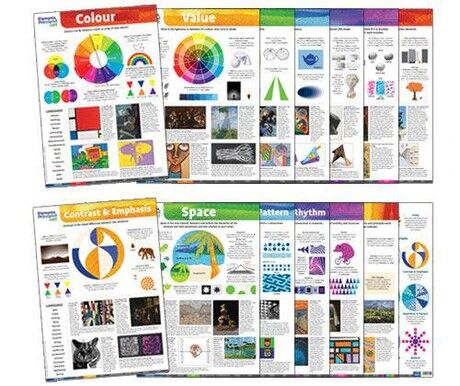Table Of Content

One side might have a visually heavy element, balanced with multiple lighter elements on the opposite side. Not everyone is gifted or has the ability to put elements together to come up with visual content. This is the very open, underutilized area of any visual presentation or creation. Repetition strengthens the design by connecting individual elements together. It creates consistency and association, while at the same time creating a feeling of organized movement.
Texture
Design is about creating harmony among the elements and having them come together in a final product that is unequivocally outstanding. The principles of design aren’t intended to stop you in your creative process and to adhere. They are defined to ensure that whatever you do meets the standards of what brand communication should be. We employ them to divide up rooms, define the shape of objects, highlight specific features, and so on. Identify your brand’s objective and what you expect from your designs, and the hierarchy for each element will naturally play out.
Elements of Design: Everything You Should Know
The elements of visual design make up the fundamental building blocks of a product. Learning how to achieve unity, gestalt, hierarchy, balance, contrast, scale, dominance, and similarity will be extremely useful as you work in visual design. The principles of design in art are foundational concepts that guide the creation and evaluation of artworks, ensuring visual harmony, balance, and cohesion. These principles include balance, contrast, emphasis, movement, pattern, rhythm, and unity/variety.
Types of Design Principles
A tool graphic designers and artists use to illustrate and explain subjects. In its purest form, a shape is a two-dimensional area with a border around it. A graphic designer can employ other elements such as line, color, value, and shadow to give a shape a more three-dimensional appearance. As a designer, you must consider seven important elements in every design project to ensure viewers find the piece of art appealing. These elements include form, shape, line, texture, color, value, and space.
The Principles of Design and Their Importance
Balance can be achieved through careful distribution of visual weight, strategic arrangement of elements, and a sense of harmony in your overall composition. We have put together the essential principles of design that will form your guiding compass as a creator. They extend from design fundamentals you can learn as a self-taught artist to entire fields of study in creating visually engaging content. Every design in the world is different, and each artist adds their touch to their creations, yet, the principles of design remain the same. The human eye is naturally inclined to seek out proportions and balance and follow the natural progression of any piece of visual art.
Explore Contrasts with Different Textures
They can create excitement (particularly flowing and progressive rhythms) or create reassurance and consistency. One of the most common complaints designers have about client feedback often revolves around clients who say a design needs to “pop” more. While that sounds like a completely arbitrary term, what the client generally means is that the design needs more contrast.
Skillful use of value can also lead to visually striking designs that capture the audience's attention and convey a particular mood or atmosphere. The elements of design described above are the building blocks of any composition. Don’t confuse them with the principles of design — unity, balance, proximity, alignment, contrast, emphasis, repetition, proportion, hierarchy, movement, and figure-ground. Design principles help designers arrange elements on a page in the most logical, functional, and appealing manner.

In this course, we showed you the basic elements you need to build up your design. These building blocks are essential to understand in order to create a successful design piece. If color values are close between the elements and space, then the design will look flat.
References & Where to Learn More
Even if you’re repeating content or styles across different platforms, add some dynamism to it so that it can be easily recognized without seeming like lazy work. If you have a hero visual in your design and want it to be at the center of your communication, give it its own space and write your content on a solid patch — this is contrast. For any design to have a dynamic look, it is essential to have well-contrasted elements. Any seasoned designer would tell you that emphasis can make or break an advertisement. To know what element needs emphasis, you must address the purpose of the creative. Emphasis is the part of a design that catches the eye of the user—a focal point, in other words.
Lines are strokes connecting two points, and the most basic element of visual design. We can use them to create shapes, and when we repeat them, we can form patterns that create textures. For instance, consistency ensures that controls remain uniform throughout a design, while proximity suggests related items be grouped.
Many of the principles below are closely related and complement one another. The main principles of graphic design are balance, contrast, emphasis, repetition and pattern, proportion, movement, white space, unity, and variety. Nowadays, creating designs that enhance user experience (UX) is important. Designs that are visually appealing as well as emotionally effective to target your audience are not very easy to create. There are certain rules and guidelines which help UX designers to shape a better user experience through certain elements of design.
Principal element design of pyrochlore-fluorite dual-phase medium- and high-entropy ceramics - ScienceDirect.com
Principal element design of pyrochlore-fluorite dual-phase medium- and high-entropy ceramics.
Posted: Sat, 30 Apr 2022 07:00:00 GMT [source]
This can refer to their alignment in relation to the entire composition (left, center, or right-aligned) as well as their alignment to one another. Whichever type of balance technique you use, the result should feel right. It should give the viewer a sense of harmony and not make them feel uneasy. Grid and alignment are closely related to balance and refer to the way elements are arranged in relation to an invisible grid on the page.
Design principles are guidelines to follow if you want to create effective visuals, from oil paintings and blog graphics to eye-catching social media posts. Contrast, like proximity, creates a focal point in a visual design. Unlike natural patterns, geometric patterns are also popular among designers. Using patterns gives your brand the edge to use them in more applications and backdrops and even form a design motif that can become a centerpiece at events. Often underplayed as a designer’s pet peeve, balance is as essential as the quality of the design itself.
In the first lesson, you’ll learn the difference between visual design elements and visual design principles. You’ll also learn how to effectively use visual design elements and principles by deconstructing several well-known designs. Graphic designs have various elements that designers must understand well to create visually pleasing digital graphics. Color, shape, and form are popular design elements you are familiar with, but other elements are just as important.
It’s only when it’s done poorly that we notice it.” This is why good design is tricky to define. It’s for you if you’ve ever wondered what goes into good design_._ You'll find it handy whether you're a complete amateur or a budding designer—so let's get stuck in. Receive weekly practical tips on how to communicate visually, right in your inbox. Visual direction refers to instances in which the content screams “look over here” through the use of horizontal and vertical lines.
Interior Designer Michael Smith shares Insight on Design Elements for ‘White House Style’ - Belmont University News & Media
Interior Designer Michael Smith shares Insight on Design Elements for ‘White House Style’.
Posted: Fri, 02 Oct 2020 07:00:00 GMT [source]
There’s much debate over exactly how many principles of design exist. Some designers say 7, others 12, and still others somewhere in between. But when it comes to design principles, numbers aren’t the important thing.

No comments:
Post a Comment